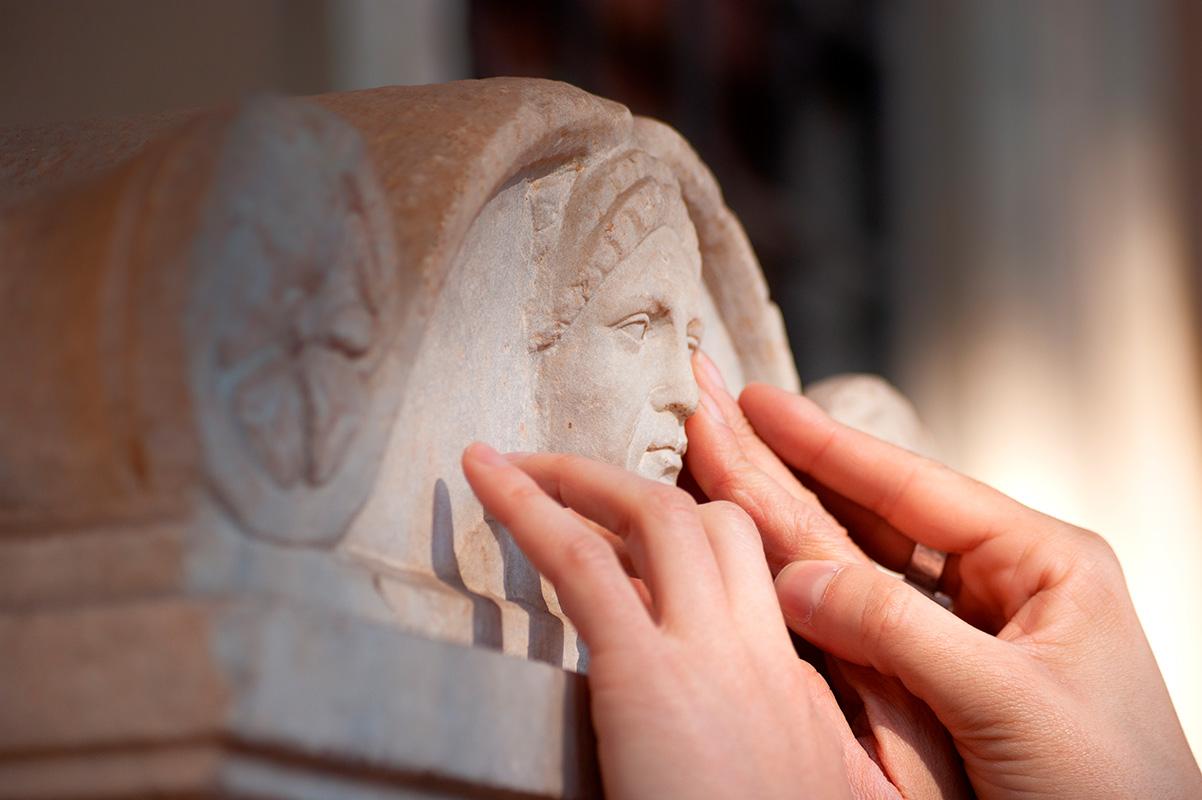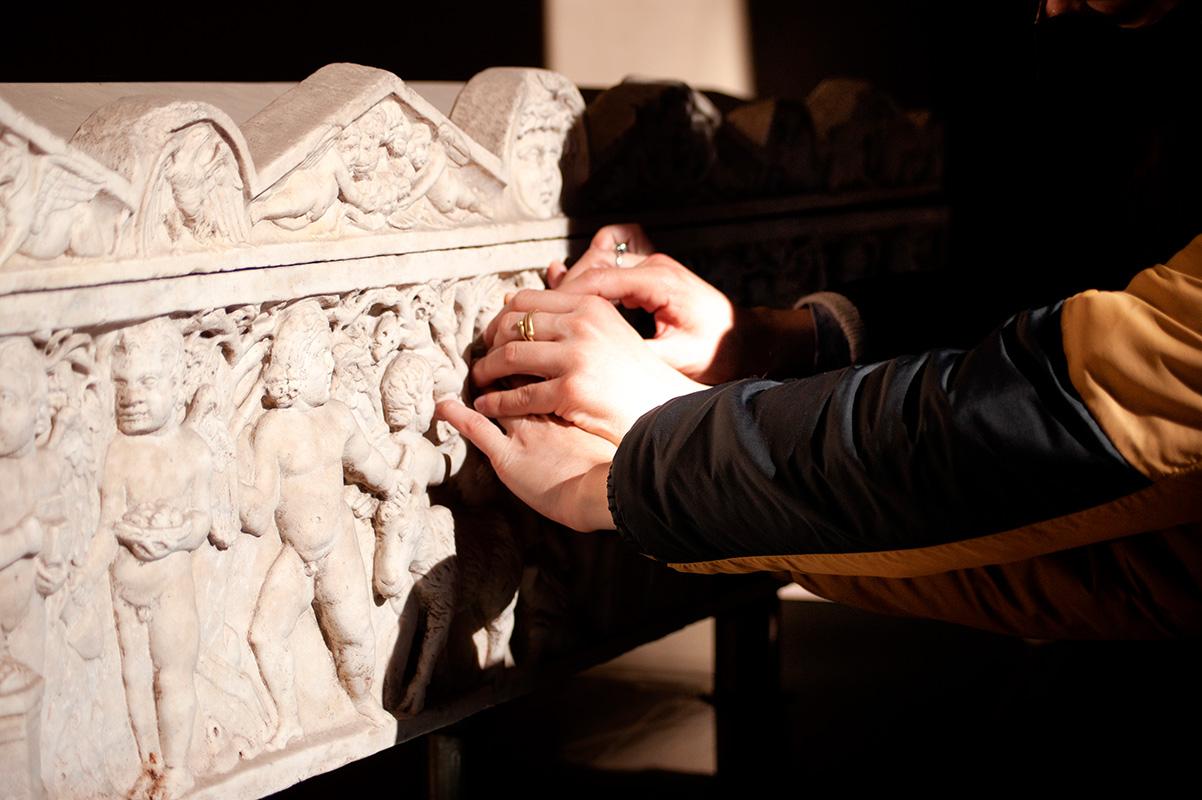Tactile itineraries
VIVE offers inclusive tactile itineraries led by specialised educators, so that you can share a learning experience based on all the senses, not just sight.
The tour leads into the upper loggia of Pope Paul II's secret garden to discover the Lapidarium: 120 marble works, from the classical age to the Renaissance, many of them found in the early 20th century in the area of Piazza Venezia. Through the tactile experience, visitors learn about the history of these marbles – from their discovery to their arrival at Palazzo Venezia – their volumes and decorations in a fascinating immersive narrative. The layout was developed in collaboration with UICI – the Italian Union of the Blind and Visually Impaired – to make VIVE increasingly accessible and inclusive.
A guide experienced in museum accessibility engages students in a sensorial exploration of the spaces and works of the Vittoriano. The tour begins at the Liberty style gateway on Piazza Venezia and continues to the plinth of the equestrian statue of Victor Emmanuel II, discovering the physical characteristics of Botticino marble and the stories portrayed. It then moves on to gain spatial familiarity with Piazzale del Bollettino, circumscribed by the curvilinear form of the Sommoportico and explore the block of stone from Monte Grappa. Typhlo-teaching aids are used along the route.
This tour conveys how Italy became a united and independent nation, and meets its heroes, from Giuseppe Mazzini to Giuseppe Garibaldi, Count Cavour and Victor Emmanuel II.
A visit to the Museo Centrale del Risorgimento allows students to learn more about this period in Italian history via a tactile experience. Marble busts and bronzes, and listening to sources, tales, anecdotes and pieces of music facilitate a reconstruction of the appearance and dress of the protagonists and indeed the entire context of the period. The tour is led by a guide experienced in museum accessibility and includes the use of typhlo-teaching aids.












